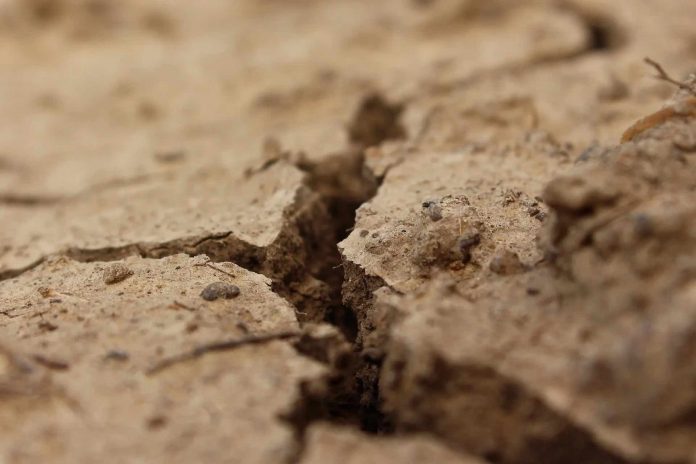Modern agriculture is underpinned by a steady supply of fertilizer. However, one of the main ingredients of fertilizer, phosphorus, is running out, putting pressure and financial strain on farmers throughout the world. Now, with war in Europe causing additional supply disruptions, diminishing stocks of phosphorus may compromise the ability of the world to feed itself.
Mined from rocks and often liberally applied to fields, phosphorus is used in agriculture to help crops grow. However, much of this vital nutrient leaches from fields into nearby rivers, where it is transported to the ocean and eventually buried in deep ocean sediments. As the easily minable sources of phosphorus-rich rock run out, the world faces an impending shortage of this key fertilizer ingredient.
In a new study published in Science of the Total Environment, authors Andrew Abraham, post-doctoral researcher in Northern Arizona University’s School of Informatics, Computing, and Cyber Systems, and Chris Doughty, associate professor of ecoinformatics, suggest an age-old solution to this global crisis—wildlife.
“In the past, animals such as whales, sea birds, fish and bears played a key role in returning phosphorus from ocean depths back onto land,” Abraham said. “In doing so, they collectively retained this nutrient in the biosphere, supporting a more fertile planet. Today, however, species extinctions, diminished population abundances and the erection of fences and dams have reduced this nutrient transport service by more than 90 percent.”
Without wildlife moving nutrients around the Earth, phosphorous transport today is dominated by humans. However, inefficient use in agriculture leads to substantial losses to the ocean, where it becomes vastly dispersed and unrecoverable with current technologies. So, what can be done to recover human losses of phosphorus to the ocean? This study suggests a creative answer.
“Through our research, we were able to show that historically, wild animals transported a large amount of phosphorus that is on par with other important flows such as dust deposition and wildfires,” Abraham said. “Importantly though, wildlife can return phosphorus back to the land. By restoring interconnected animal communities, ancient pathways of natural fertilization can be revitalized, helping to conserve an irreplaceable element.”
“Animals are like a natural circulatory system for phosphorus,” said co-author Joe Roman, conservation biologist and researcher at the University of Vermont. “They can move nutrients through their carcasses, urine and dung.”
The researchers believe services by animals not only generate sources of fertilizer for farmers to use but also will help increase the resilience of natural ecosystems over the coming century. In the face of climate and ecological breakdown, this is crucial in ensuring long-term health of the planet.
Doughty, who co-authored the study, believes there might even be an opportunity for a phosphorus trading system, with the collective goal of keeping this important nutrient out of the bottom of the ocean.
“If it is cheaper or easier to invest in a biodiversity project that retains a known quantity of phosphorus in ecosystems, a country or business could invest in such projects,” he said.
Learning from previous attempts, the authors base their trading system on the current trading market for carbon. In this way, localities could either benefit directly, from animal-mediated fertilization such as bird guano, or indirectly, by continuing to use mined fertilizer and relying on other countries to sponsor a biodiversity project in hopes of retaining phosphorus within the global biosphere.
“Phosphorus is an indispensable nutrient for both human and natural systems. A defining attribute of animals is their ability to move, connecting the land and seascapes through which they pass,” Abraham said. “Let us restore wildlife populations and revitalize the natural phosphorus pump so that we can all benefit from a more nutrient-rich world.”















